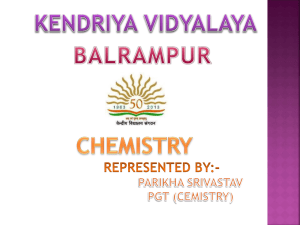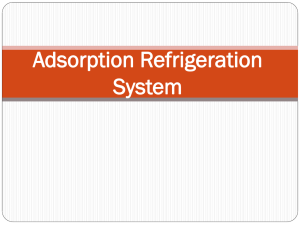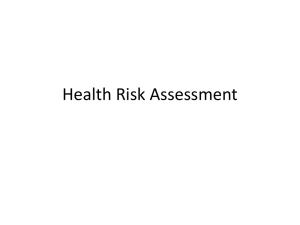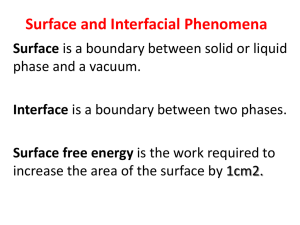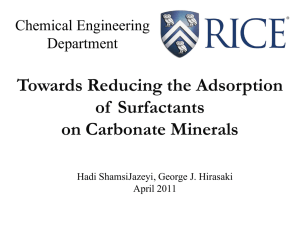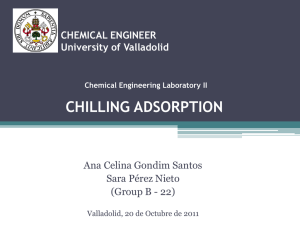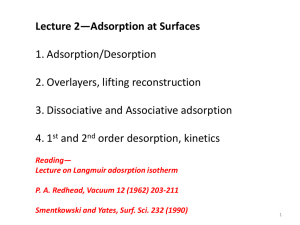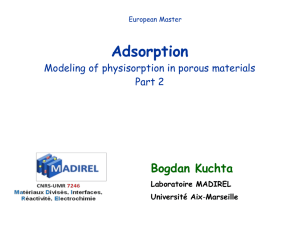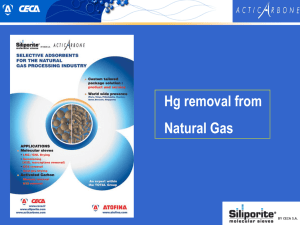Source: USEPA, APTI 415 : CONTROL OF GASEOUS EMISSIONS
advertisement
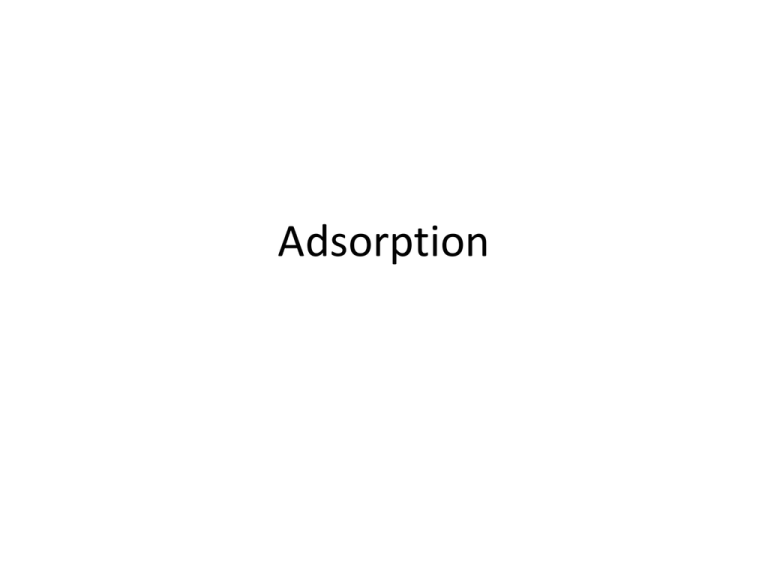
Adsorption Source: USEPA, APTI 415 : CONTROL OF GASEOUS EMISSIONS Source: USEPA, APTI 415 : CONTROL OF GASEOUS EMISSIONS Regenerative Adsorption Systems • Fixed bed • Moving bed • fluidized bed Multi-bed, fixed-bed-type adsorption system. Source: USEPA, APTI 415 : CONTROL OF GASEOUS EMISSIONS Source: USEPA, APTI 415 : CONTROL OF GASEOUS EMISSIONS Moving-Bed Designs • Moving-bed systems can use a carbon bed more effectively than a fixed-bed system because the solvent-laden air stream passes only through the unsaturated portion of the carbon bed, reducing the distance the air stream travels through the bed; therefore, the static pressure drop is low. • One type of moving-bed adsorber is the rotary wheel zeolite (沸石轉輪)adsorber. The zeolite adsorbent is mounted in a vertically oriented wheel that rotates at a rate of approximately five revolutions per hour. Three quarters of the wheel are in adsorption service while one quarter is being desorbed using hot air. The desorbed gas stream has a VOC content that is concentrated by approximately a factor of 10 to 15 over the inlet level and a flow rate that is less than 10% of the inlet gas stream. Overall VOC adsorption efficiencies are in the range of 90% to 98%. Source: USEPA, APTI 415 : CONTROL OF GASEOUS EMISSIONS Source: USEPA, APTI 415 : CONTROL OF GASEOUS EMISSIONS Rotary wheel zeolite adsorber Fluidized-Bed Adsorbers • A fluidized bed system uses the motion of the solvent laden gas stream to entrain adsorbent material and thereby facilitate good gas-solid contact. The VOC-laden gas stream is introduced at the bottom of the adsorber vessel and passes upward through the fluidized adsorbent with the purified gas exiting at the top. The adsorbent plus VOC is pneumatically conveyed to the desorption vessel for regeneration. Regeneration gas plus VOC exit from the top and are ready for further treatment. The regenerated adsorbent is then pneumatically conveyed back to the adsorption vessel. Because the adsorption and desorption processes are physically separate, organic contaminants can be concentrated by a factor of 10 to 50. Source: USEPA, APTI 415 : CONTROL OF GASEOUS EMISSIONS Fluidized-bed adsorber Source: USEPA, APTI 415 : CONTROL OF GASEOUS EMISSIONS adsorption isotherm • The adsorption isotherm is a plot of the adsorbent capacity versus the partial pressure of the adsorbate at a constant temperature. Source: USEPA, APTI 415 : CONTROL OF GASEOUS EMISSIONS Factors Affecting Adsorption System Performance • Temperature: Adsorption is an exothermic process. The capacity of an adsorbent decreases as the temperature of the system increases. As a general rule, adsorber temperatures are kept below 130°F (54°C) to ensure adequate bed capacities. • Pressure: Adsorption capacity increases with an increase in the partial pressure of the vapor, which is proportional to the total pressure of the system. • Gas velocity: In order to achieve 90% or more capture efficiency, most carbon adsorption systems are designed for a maximum gas velocity of 100 ft/min (30 m/min) through the adsorber. A lower limit of at least 20 ft/min (6 m/min) is maintained to avoid flow problems such as channeling. • Humidity: at high relative humidity the number of water molecules increases to the extent that they begin to compete with the hydrocarbon molecules for active adsorption sites, thus reducing the capacity and efficiency of the adsorption system. • Bed Depth: There are practical minimum and maximum limits to the bed depth. The minimum depth is based primarily on the length of the mass transfer zone (MTZ). Actual bed depths are usually several times longer than the length of the MTZ. Often the actual adsorbent depth is fixed by the Source: USEPA, APTIbed. 415 : CONTROL OF GASEOUS EMISSIONS maximum allowable static pressure drop across the Source: USEPA, APTI 415 : CONTROL OF GASEOUS EMISSIONS Adsorbent Regeneration Methods 某光電廠在一大氣壓、25℃下VOCs 排放廢氣流量為200 CMM, 其排氣中含100 ppmv濃度之丙酮(CH3-CO-CH3)。今某環工技 師擬用單床、固定式活性碳床處理之,其內含之活性碳顆粒可 以適用Freundlich 等溫吸附模式: ,式中a 與p 之單位分別為kg/kg 及Pa。若該廠之活性碳吸附 床填充體積為4m3,填充密度為600 kg/m3,碳床之有效吸附容 量為30%,請回答下列問題:活性碳床之換碳頻率為何?試分述 該環工技師設計之技術合理性與經濟性。(93環技師) 有一乾洗工廠其廢氣排放量為100Nm3/min,廢氣中CCl4 的 濃度為700ppm,該工廠想用兩個活性碳吸附床處理廢氣;假 設活性碳吸附床中壓力為1atm,溫度為50℃,活性碳的飽和 吸附容量為45%(即0.45kg CCl4 / 1kg C),且其有效吸附 容量為飽和容量的0.3,活性碳的密度為150kg/m3;如果吸 附床每4 小時再生一次,而且任何時間都只有一個吸附床進 行吸附。請問: 每個活性碳吸附床內,所需活性碳的量為多少公斤? 吸附床的氣體表面流速為20m/min,則須多大橫斷面積? 吸附床的深度為多少? (標準狀態為1atm,0℃;R=0.082 L-atm/gmol-K;原子量 C=12,Cl=35.5)

